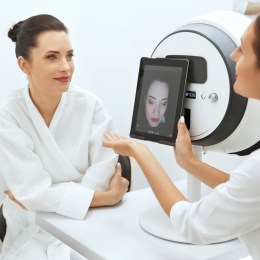All in all, the new EU cosmetics regulation (EU/1223/2009) is not going to set any new requirements for most product manufacturers, such as Dibi milano, because the regulation is an extension of the previous cosmetic directive (EEC/76/768), and no major changes have been introduced.
In the past, the EU Commission had used the system of the ‘directive’, which was not law until accepted by each country, and national governments could make ‘minor’ changes (which in practice caused some major headaches to product distribution!). However, a ‘regulation’ becomes law in all the EU Countries without needing approval of national governments.
Regulation EU/1223/2009 came into force across Europe on 11 July. Over the 33 years of the cosmetic directive (1976 to 2009), a number of amendments had been made, keeping it up-to-date with the expectations of modern society. With the transition to the regulation there are a few points of difference. you may have noticed some packaging changes in product lines that are made or distributed in Europe.
Here are the key changes:
Article 18 of the new law marks the end of a long road to banning any kind of testing on animals for cosmetic use. in Europe, most cosmetic products haven’t been tested on animals since the 1980s, long before law required it. This decision was originally agreed upon by the cosmetic industry as a group.
The directive has been catching up with industry self-regulation for the past 10 years:
‘ 2004: testing ban for cosmetic finished products.
‘ 2009: testing ban in EU for all cosmetic ingredients.
‘ 2013 (11 March): ban on any ingredients or cosmetic products tested on animals, wherever in the world the tests may have been done.
Perhaps the most obvious change that we’ll see ripple around the world is that it’s now no longer permitted to include claims like ‘cruelty free’ or ‘not tested on animals’ on any packaging, as this is now simply a legal requirement of all cosmetic products.
Article 20 states that every claim made to consumers must be substantiated with sufficient evidence. This was already in the previous directive; though in the past it was flaunted by many, perhaps because of lacking or delayed penalties for noncompliance. The addition is the plan to determine a set of common criteria for claims, which is being developed by the European Commission, to be presented in 2016. The objective is to have clear definitions of what can be said about any product and what the penalties will be. In the past, often, what was not specifically forbidden by the law was considered as permitted when it came to ingredients. This loophole has been sewn up – substances that are potentially active (such as dyes, Uv filters, preservatives) may be used only for the purposes they are designed. Clearly, this will be an ongoing process, as the law will need to be continuously updated to keep pace with technological and toxicological advances.
In the only major change, a new article specifically addresses nanoparticles (materials that are manufactured at a very small scale, down to 10,000 times smaller than the diameter of a human hair). Several independent bodies will assess whether existing methods can determine the safety of nanomaterials. it is now specifically included in the law that any nanomaterial must be approved before it can be included in cosmetics. If and when the first nanomaterial approval does come through, we’ll no doubt be reading the next amendment to the EU cosmetic regulation.


